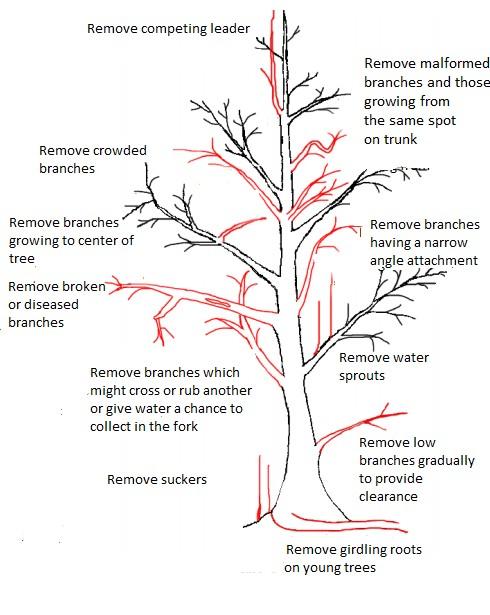So, everyone talks about ‘pruning’ like it’s some neat, tidy garden job. Let me tell you, when I had to do some ‘pruning’ on this old project, it was less like gardening and more like wrestling a damn octopus in a closet. No pretty pictures in this guide, just the messy truth from my end of things.
The Jungle I Walked Into
Picture this: code that looked like spaghetti thrown at a wall by a toddler. That was my inheritance when I started. They called it a ‘legacy system.’ I called it a nightmare. It was supposed to do one simple thing, but it had tendrils reaching out everywhere, doing who knows what. Every time I tried to adjust one part, something else screamed bloody murder on the other side of the application. We’re talking years of neglect here, folks. Patches slapped on top of patches. Features nobody even remembered existed but everyone was too scared to remove.

My So-Called ‘Pruning’ Strategy
Forget those fancy diagrams and step-by-step guides you see online. My strategy was more like hacking through a dense jungle with a rusty machete I found in the shed. Here’s roughly how I tackled it:
- Stare at the beast: First off, I just spent days, maybe a good week or two, just looking at the whole mess. I tried to figure out which parts were actually doing something useful, which were dead weight, and which were those sneaky undead bits – you know, the ones that looked dead but would totally bite you if you poked them.
- Talk to the ghosts: Then, I went on a hunt to find people who actually worked on this monster in the past. Most of them were long gone, moved on to greener pastures, I guess. The few I found still around got this really haunted look in their eyes when I mentioned the project’s name. I got a few cryptic warnings, like “Whatever you do, don’t touch the billing module after midnight.” Real helpful stuff, that was.
- The first snip (and the inevitable screams): I decided to start small. Found a tiny, obviously useless feature. Something that, according to the logs, hadn’t been accessed by a soul for about three years. Took a deep breath, crossed my fingers, and cut it out. And of course, wouldn’t you know it, someone, somewhere, who hadn’t used it in those three years, suddenly decided that very day that it was absolutely critical to their entire existence. That’s always how it goes, right? Classic.
- Isolate and conquer (or at least try to): Instead of trying to untangle the whole knotted mess at once, I attempted to fence off small sections. Like, “Okay, this part just handles user logins. Let’s see if we can make only this specific part suck a little less.” Sometimes it actually worked. Other times, the jungle just grew right over my flimsy fence.
- Aggressive weeding: After that came the more brutal part. I’m talking dead code, commented-out blocks from 2007, libraries so ancient they could probably vote. Just rip ’em out. The system would complain, obviously. Lots of angry red text in the console. But slowly, very, very slowly, it started to breathe a little easier. Or maybe that was just me, finally hyperventilating less.
Was It Worth It? The Aftermath
Yeah, I suppose so. The thing is, with this kind of work, it’s never really ‘done.’ You prune, it grows back. Maybe it’s a little neater for a while, but that wild, untamed nature is always lurking there. The project definitely became more stable, ran a bit faster. Fewer late-night emergency calls, which was the main goal, let’s be honest with ourselves. But it wasn’t like I magically turned a fetid swamp into a pristine Zen garden. It was more like I turned a really terrifying swamp into a slightly less terrifying swamp. You could at least see where the alligators were hiding, most of the time.
And you know why I even bothered digging into this level of detail for you? It reminds me of this one time with my old car. Thing was an absolute rust bucket, basically held together with hope, prayer, and a whole lot of duct tape. Every single mechanic I took it to said, “Just junk it, man. It’s not worth it.” But I kept patching it up. Probably spent more on spare parts than the car was ever worth. Why? Pure stubbornness, mostly. And maybe, just maybe, because nobody else would touch it with a ten-foot pole. This project felt exactly like that. It was my personal rust bucket to fix, my challenge.
Funny thing is, after I finally got that project somewhat tamed, behaving itself, the higher-ups decided to rewrite the whole thing from scratch using some shiny new tech everyone was raving about. Six months down the line, guess who they called? Me. Asking how I made that old, crusty ‘billing module’ work because their brand-new, super-duper version couldn’t handle leap years or some other ridiculous edge case. Pruning, rewriting, it’s all just a cycle, man. You just try to make your little corner of the garden, or the codebase, a bit less chaotic for a while. That’s the real illustrated guide for you, the raw and unfiltered version.





















